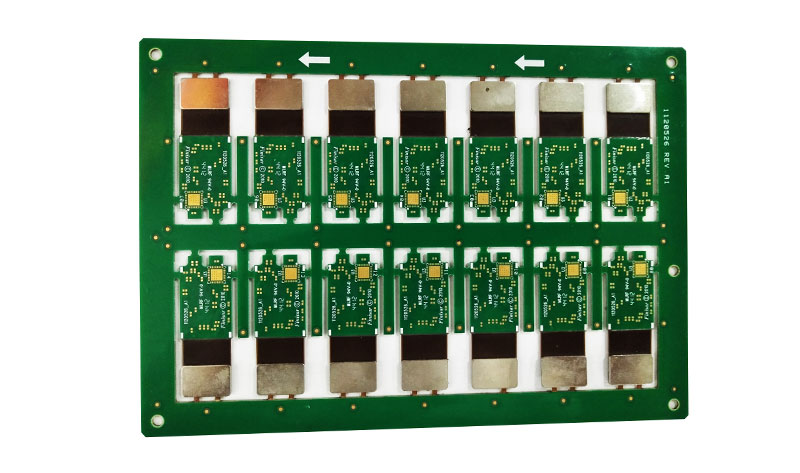There are many benefits of hard and soft boards that many designers did not know before because their designs do not have to use this technology. However, more and more designers are now under pressure to build increasingly dense electronic devices. Even more troublesome is the continuous reduction in manufacturing costs and manufacturing time. In fact, this is really not a new technical issue.
The combination of soft board and hard board is likely to become a trap for novices on the road to the development of new technologies. Therefore, it is wise to understand how to make flexible circuits and hard and soft boards. In this way, we can easily find the hidden dangers in the design and prevent them from happening. Now let us know what basic materials are needed to make these boards. The following is a detailed introduction of Flexible Board manufacturer.
Rigid Flex PCB Board Design
1. Substrate and protective film
First, we consider ordinary Rigid PCB, whose substrates are usually fiberglass and epoxy. In fact, these materials are a kind of fiber, although we call it "rigid", if you take a single layer, you can feel its elasticity. This layer can be made more rigid due to the cured epoxy resin. Because it is not flexible enough, it cannot be applied to some products. However, it is suitable for many electronic products that are simply assembled and will not continue to move.
In more applications, we need a flexible plastic film that is more flexible than ever. Epoxy. Our most common material is polyimide, which is very soft and strong, and we cannot easily tear or stretch it. In addition, it has incredible thermal stability and can easily withstand temperature changes during the reflow process during processing. It can hardly find its expansion and contraction during temperature fluctuations.
Polyester (PET) is another commonly used flexible circuit material, which has lower heat resistance and temperature distortion than PI film than polyimide (PI) film alone. This material is commonly used in low-cost electronic devices, where the printed wire is wrapped in a soft film. Because PET cannot withstand high temperatures, let alone soldering, flexible circuit boards are usually produced by cold pressing. I remember that the display part of this clock radio uses this flexible connection circuit, so this radio usually doesn't work properly. The root cause is this poor quality connector. Therefore, we recommend that PI films are still used for soft and rigid bonding boards. Other materials can also be used but are not often used.
2. Conductor
Printed wires are used for these money-saving electronics, usually carbon film or silver-based inks, but copper wires are still a popular choice. Depending on the application, we have to choose different forms of copper foil. If you are simply replacing wires and connectors to reduce manufacturing time and costs, then electrolytic copper foil for the right circuit board is the best choice. Electrolytic copper foil is also used to increase the current carrying capacity by increasing the weight of copper, so as to obtain a achievable copper skin width, such as a planar inductor.
3. Adhesive
Usually, we need an adhesive to bond copper foil and PI film. This adhesive was developed specifically for flexible circuit boards. "Adhesive-free" laminates are gaining popularity with copper on PI films due to the introduction of new processing technologies such as direct coating and deposition. When it is necessary to add protective beads on soft and hard joints, we will use silicone, hot melt adhesive or epoxy. This will increase the mechanical strength of the soft and hard joints, ensuring that stress fatigue or tearing does not occur during repeated use.
It is important to understand the materials used on a flexible circuit board or Rigid Flex PCB Board Design. We can also let manufacturers choose materials freely according to the application, but this will bring hidden dangers to the failure of the final product.

没有评论:
发表评论